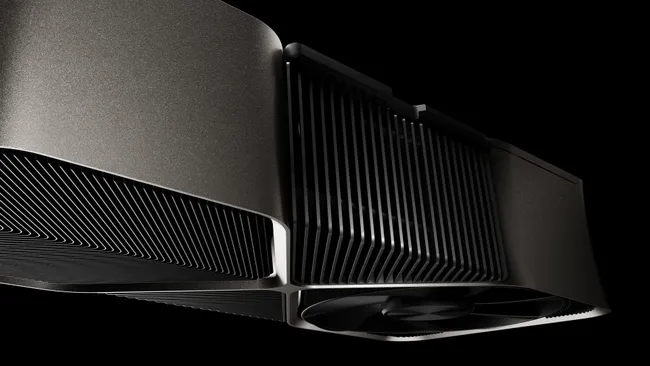Nvidia RTX 5090 rumor claims PCIe 5.0, DisplayPort 2.1 UHBR20, and only a single 12V-2x6 power connector
Other rumors have said 5090 will have two 12V-2x6 connectors.

Now that preliminary specs for the RTX 5090 and RTX 5080 have leaked, including the GPU core counts and die models, other rumored specs for Nvidia's next-generation Blackwell RTX 50-series GPUs are flooding the internet. Benchlife reports that Nvidia's flagship RTX 5090 will come with PCIe 5.0 connectivity and a single power connector, as well as adding DisplayPort 2.1 UHBR20 outputs.
The news claims that the RTX 5090 will have a single 12V-2x6 power connector, noting the GPU "can only" use a single connector. This could be some sort of limitation Nvidia is implementing, but we have seen overclocking-focused RTX 4090s with dual 16-pin connectors before. If the 5090 has a 600W TGP, there's little doubt in our minds that some AIB partner will release a factory overclocked halo model with dual power connectors at some point.
The RTX 5090 will purportedly finally have DisplayPort 2.1a connectors — Nvidia has been shipping DP1.4a outputs since the GTX 10-series launched in 2016, even though DisplayPort 2.0 was formally released by VESA in 2019. DP2.1 in 2022 didn't change much, just cleaning up things to align with USB4. In fact, AMD revised its RDNA 3 DP2.0 support to be DP2.1 compliant with the RX 7000-series parts. Nvidia will also reportedly support the full bandwidth UHBR20 spec — so far, only AMD's Radeon Pro W7900 offers UHBR20 on a single output; the rest of the ports as well as other RDNA 3 GPUs use UHBR13.5.
Elsewhere, it's claimed that the 5090 will have a 14-layer PCB to help with signal integrity. Air cooling will remain the primary cooling solution for the RTX 5090, despite its ultra-high 600W TDP. However, the media outlet suggested that "various companies" will also launch liquid cooling solutions — which isn't much of a stretch, considering we've seen such GPUs for the past decade or so.
If correct, these specs represent a couple of firsts for Nvidia. The RTX 50-series will be the first Nvidia client GPUs to be offer PCIe 5.0 capabilities (the data center H100/H200 have already had PCIe 5.0 support). That double the amount of external bandwidth for the GPUs, from 32GT/s (PCIe 4.0 x16) to 64GT/s (PCIe 5.0 x16). It's questionable how beneficial this will be in gaming scenarios, but it could be advantageous for certain non-gaming workloads that do more communication with the host system, as well as potentially in multi-GPU scenarios (like AI). This isn't the world's first GPU with PCIe 5.0, however, as the Nvidia Hopper H100 already had that in 2022 — and even Moore Thread's GPU lineup also has PCIe 5.0 support.
The RTX 50-series will also be the first Nvidia GPU lineup to sport a revision of DisplayPort beyond the now-ancient 1.4a version. DisplayPort 1.3 through 1.4a have offered up to 32.4 Gbps of bandwidth (25.92 Gbps with 8b/10b encoding for data) since 2014, with 1.4 adding DSC (Display Stream Compression) support in 2016. DP1.4a revised the DSC support from 1.2 to 1.2a in 2018, as earlier DSC revisions seemed to have had some issues. Now that Nvidia is finally moving to the newer DisplayPort standard, it's going for the highest bandwidth variant: UHBR20. That supports up to 20 Gbps per lane (up from 8.1 Gbps with version 1.3 through 1.4a) for 80 Gbps of total bandwidth. DP2.1 also uses 128b/132b encoding to improve the efficiency of transmission, so the maximum data bandwidth ends up at 75.37 Gbps (with 0.20 Gbps reserved for other purposes). That means the actual video data bandwidth is nearly triple that of the aging DP1.4a spec. With DSC, UHBR20 can even support up to 8K output at 240 Hz or 16K at 60 Hz — or a theoretical 960 Hz for 4K video.
Last but not least, Benchlife claims the RTX 5090 and RTX 5080 are going to be released at CES 2025. We have our doubts about Nvidia doing a CES launch, as that's not traditionally a PC hardware tradeshow where the company has major announcements. The RTX 40-series Super refresh was the exception in early 2024, but that was a mid-cycle update rather than a major new architecture. Still, CES has also become a major venue for AI discussions and hype, and there's little doubt Nvidia will be banging the AI drum for the RTX 50-series when it arrives.
Stay On the Cutting Edge: Get the Tom's Hardware Newsletter
Get Tom's Hardware's best news and in-depth reviews, straight to your inbox.

Aaron Klotz is a contributing writer for Tom’s Hardware, covering news related to computer hardware such as CPUs, and graphics cards.
-
Amdlova Just need one, two connectors melting at same time can Hurt the image of nvidia. One is user error :)Reply -
Alvar "Miles" Udell I don't see it having two 12V-2x6 connectors, but I can easily see a 6-pin 75w auxiliary connector, perhaps an 8 pin 150w for ultra high end editions, for liquid cooled editions so the cooling solution doesn't eat into the PCIe + 12V-2x6 power supply, and would satisfy the requirement of only one 12V-2x6 connector.Reply